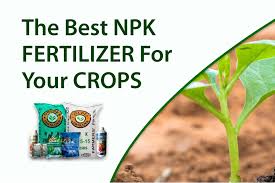
Oct . 15, 2024 00:55 Back to list
Sustainable Production of Organic Fertilizers in Commercial Manufacturing Facilities
The Rise of Commercial Organic Fertilizer Factories
In recent years, the agricultural sector has undergone a significant transformation as the demand for sustainable practices increases. One of the most notable trends in this transformation is the rise of commercial organic fertilizer factories. These facilities play a vital role in promoting environmentally friendly farming practices while also addressing the rising concerns regarding soil health, food security, and agricultural sustainability.
The Importance of Organic Fertilizers
Organic fertilizers are derived from natural sources, including plant and animal waste, and are known for their ability to enhance soil fertility without the negative environmental impacts commonly associated with synthetic fertilizers. Unlike their chemical counterparts, organic fertilizers improve soil structure, promote microbial activity, and provide essential nutrients in a slow-release manner. This contributes to healthier crops, reduced runoff into waterways, and improved soil resilience against erosion and degradation.
As consumers shift towards organic produce, farmers are increasingly seeking ways to meet this demand. The establishment of commercial organic fertilizer factories caters not just to this growing market but also supports the transition from conventional to organic farming methods. By providing farmers with quality organic fertilizers, these factories play a crucial role in enhancing agricultural sustainability.
The Process of Producing Organic Fertilizers
The production of organic fertilizers typically involves several key processes, starting from raw material collection to the final product’s packaging and distribution. Organic fertilizers can be made from various raw materials, including composted plant matter, livestock manure, and other organic by-products.
1. Collection and Processing Raw materials are sourced from local farms, municipalities, and food processing industries. This waste material undergoes initial preprocessing, which may involve shredding and mixing to ensure uniformity.
2. Composting The next step involves composting the organic materials under controlled conditions to facilitate microbial activity. This process not only breaks down the organic matter but also kills pathogens and weed seeds, resulting in a stable product rich in nutrients.
commercial organic fertilizer factories

3. Screening and Packaging After composting, the material is screened to remove any oversized particles. The final compost is then packaged for distribution, often with specific labeling that indicates the nutrient content, application instructions, and organic certification.
Environmental and Economic Benefits
Commercial organic fertilizer factories contribute significantly to both environmental and economic sustainability. By recycling agricultural and food waste into useful fertilizers, these factories help reduce landfill overflow and lower greenhouse gas emissions associated with waste disposal. This circular approach not only benefits the environment but also promotes rural development by creating jobs in production, distribution, and marketing.
Furthermore, by offering farmers organic fertilizers, these factories help improve crop yields and quality, resulting in higher income for farmers. As the global demand for organic food continues to rise, farmers who utilize organic fertilizers are better positioned to compete in the marketplace.
Challenges and Considerations
Despite the benefits, the development of commercial organic fertilizer factories does not come without challenges. The initial investment for setting up such facilities can be substantial, and farmers may be hesitant to shift from conventional fertilizers that they are accustomed to. There is also the need for education and training to ensure that farmers understand how to properly use organic fertilizers to maximize their benefits.
Regulatory hurdles can also pose challenges. Standards for organic fertilizers vary by region, and compliance with these regulations requires careful attention to ensure product credibility. As the organic market continues to expand, a standardized framework for producing and labeling organic fertilizers will be essential in maintaining consumer trust.
Conclusion
In conclusion, the rise of commercial organic fertilizer factories marks a significant step toward sustainable agricultural practices. By providing farmers with eco-friendly nutrient solutions, these facilities not only support soil health and crop productivity but also contribute to broader environmental goals, including waste reduction and climate change mitigation. As the agricultural landscape continues to evolve, the role of organic fertilizer production will be vital in fostering a more sustainable food system, meeting the needs of consumers, and protecting the planet for future generations.
-
10 10 10 Fertilizer Organic—Balanced NPK for All Plants
NewsJul.30,2025
-
Premium 10 10 10 Fertilizer Organic for Balanced Plant Growth
NewsJul.29,2025
-
Premium 10 10 10 Fertilizer Organic for Balanced Plant Growth
NewsJul.29,2025
-
Premium 10 10 10 Fertilizer Organic for Balanced Plant Growth
NewsJul.29,2025
-
50 Pound Bags of 13-13-13 Fertilizer for All Plants – Bulk & Organic Options
NewsJul.28,2025
-
High-Efficiency 15-30-15 Granular Fertilizer for Healthy Crops
NewsJul.28,2025
